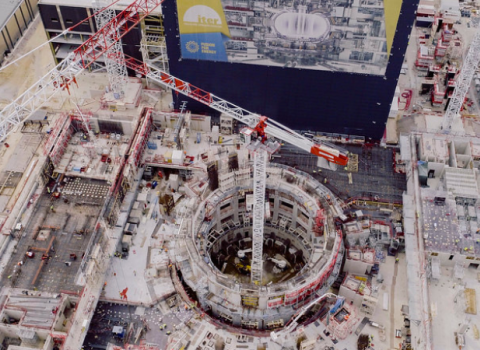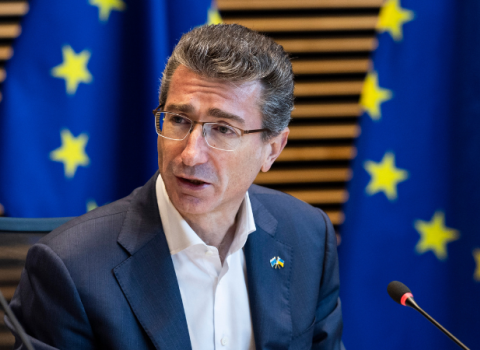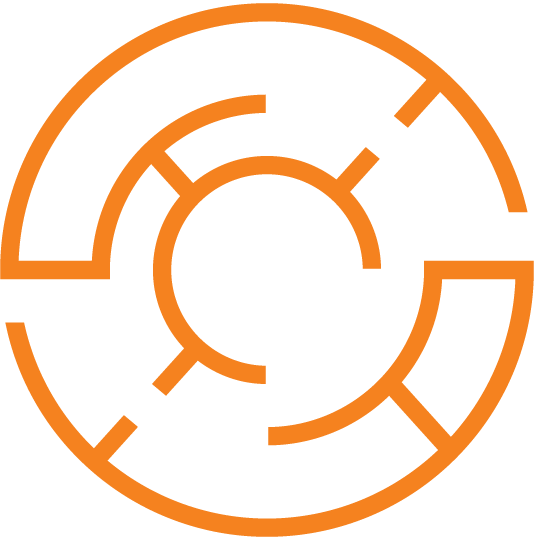Perseverance and innovation are the watchwords of the consortium made up of twelve European organisations and coordinated by Carlos Ramos, CNRS researcher with the Centre for Nanoscience and Nanotechnology1 which has brilliantly succeeded at the third call application. Their Symphony project was a winner in a collaborative call run in the framework of the European Union's Horizon Europe research and innovation programme. The project was selected in 2023 and so began 2024 with funding support of €5 million for a duration of three and a half years.
The project develops intelligent gas sensors for use in micro methanisation units which means farms can then generate their own energy. Until now, every six years the sensors for these methanisation units have had to be collected and sent for remote calibration by the company that sells them. This costly procedure will be avoided if the project succeeds because the sensors can auto-calibrate thanks to a function based on a system of optics and artificial intelligence. All the project's partners (universities, research organisations, industry, etc.) contribute different skillsets to this research.
Effective consortiums – the key to success
In January 2025, the Cour des Comptes, France's supreme audit institution, published a report that stressed the importance of France bolstering its presence in the collaborative projects which are at the core of the European research and innovation programme's Pillar II with its total budget of over €53 billion. Such projects are the driving force behind applied research in Europe and mean researchers can structure their scientific fields on the European level, access and develop public-private partnerships and obtain considerable levels of financing.
French research teams have already distinguished themselves certain fields, notably in the space sector where public research has successfully established robust partnerships with industry but the Cours des Comptes calls for this dynamic to be taken further and boosted in other sectors. More specifically, it recommends reinforcing public-private partnerships to maximise the impact and competitiveness of French research on the European scale.
Jean-Stéphane Dhersin, the director of the CNRS's Brussels Office, considers that the importance of these projects particularly "benefits European competitiveness", also pointing out that "collaboration and exchanges between researchers enhances research". Collaborative projects enable their coordinating researchers to give a new European-level direction to their scientific field but also mean the project's results can be transferred through collaboration with partners from industry. Carlos Ramos agrees. "We started out working on very fundamental science and when we found an end user, BertEnergy, and also a company to market these sensors in Senseair the project found its place in European funding". This view of the situation is shared by Xavier Rodier, the coordinator of the Echoes collaborative project which is developing a European cloud for cultural heritage with unprecedented funding of €25 million over a five-year duration. He explains that "taking part in this type of project made us part of a European network so we could interact with experts or advisory committees in our fields and that's where strategic directions are defined". His project is made up of 51 partners, including 16 organisations representing a pan-European network of 1000 cultural institutions.
Carlos Ramos considers that among the keys to success are finding the right objective and ad hoc skills, and therefore the right consortium which requires "a good connection with the scientific community". He also believes "it important to draw on the experiences of teams that have already won funding, particularly by reading their proposals to find out more about how to present things". To prepare his application file, the CNRS also supported the researcher by helping to check the budget and make sure no ineligible costs were included. Within the consortium, a specialist company from Germany is in charge of managing the project and disseminating its results.
A proactive CNRS strategy to increase influence within Horizon Europe
Jean-Stéphane Dhersin explains that CNRS scientists "may initially find Pillar 2 of Horizon Europe difficult to access". He also thinks that teams may have difficulties because of the "high level of technological maturity required", "a proliferation of small, highly targeted calls that are not readable enough" and "an insufficient presence of CNRS scientists in areas at the core of European influence".
However, that does not make the situation irreversible. In July 2023, the CNRS implemented a strategy through the recruitment of experts tasked with working with our Institutes to identify researchers who could join the member associations of partnerships like these which represent half of Pillar 2's funding capacity. As Jean-Stéphane Dhersin explains, "the CNRS is involved in these partnerships from the moment they're created and associations are formed."
In fact, to enhance the CNRS's participation in collaborative projects under Pillar 2, the organisation has set up ‘mirror’ working groups in which CNRS scientists develop the CNRS priorities and messages to be put forward by the designated CNRS representatives in France's National Thematic Groups (NTGs). The priorities defined by the NTGs are subsequently defended by France's representatives on Horizon Europe programme committees.
Collaborative research fits admirably within the whole of Horizon Europe and the CNRS also lobbies jointly in this direction with its counterparts in the G6 network made up of Europe's main research organisations – the CNR, the CNRS, the CSIC, the Helmholtz Association, the Leibniz Association and the Max Planck Society. In particular, these organisations are jointly calling for a bigger place to be set aside for collaborative projects in the programme's Pillar 1 dedicated to excellent fundamental research. This is already the case for the ERC's Synergy calls which fund projects involving teams of two to four main researchers.
Synergy – the other face of collaborative research
Marc Lavaux, a Europe and International development manager with the CNRS, can testify to the support the organisation provides "to help researchers coordinate their projects which demands a great deal of more intensive work and monitoring". In the last three years, the CNRS has recruited 100 European project engineers (IPEs) with both generalist and specialist profiles, for example in mathematics for the latter. "Coordinating a collaborative project can represent the equivalent of a part-time post which is why the support of the IPEs is so important as they're there when the project is being set up and also during the contractualisation process", adds Marc. The priority for these European project engineers is to support and help with the coordination of consortiums although IPEs can also work on all kinds of collaborative or individual project, even including projects the CNRS does not coordinate.
"Collaborative projects enable people with different ways of thinking to interact and achieve more than each of them might manage alone which isn't the case with individual grants", sums up the mathematician Carlos Simpson, CNRS research professor and a specialist in artificial intelligence. Alongside another CNRS researcher and two researchers from the Inria2 , he leads the Malinca project which has won an ERC Synergy grant worth €10 million for a six year duration. This project "combines mathematics, computer science and linguistics skills to develop a programme capable of reading and checking a demonstration written by a mathematician".
The researchers aim to use their budget to recruit 12 postdoctoral fellows "from different countries to give the project strong European foundations", adds Carlos Simpson who believes it "important to work across disciplines but also across the age range." Despite the attraction of private sector salaries for the best talents in artificial intelligence, the mathematician is counting on the fact that "it will be interesting for young researchers to join the team for two or three years before moving on to the private sector". He also firmly believes the richness of the interactions that derive from the project's collaborative and European dimension are of great benefit for science.
"Committing to projects like this also means you need to understand research policy and strategy at the European level which is really fascinating. We could just stay in our positions as researchers and complain politicians don't take our visions into account... but really it's up to us to invest in these networks, especially when the next Framework Programme is being prepared", reaffirms Xavier Rodier.
Notes
- CNRS/Paris-Saclay University
- National Institute for Research in Digital Science and Technology
This article was first published on 23 April by CNRS.





 A unique international forum for public research organisations and companies to connect their external engagement with strategic interests around their R&D system.
A unique international forum for public research organisations and companies to connect their external engagement with strategic interests around their R&D system.